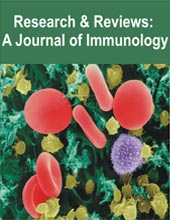
K Kazi,
- Professor and Head Brahmdevdada Mane Institute of Technology Maharashtra India
Abstract
An immunity is facilitated by lymphocyte T&B-cells that possess a wide range of T&B-cell receptors, respectively. These cells can identify and react to pathogens and diseased cells by presenting peptide antigens by means of significant histocompatibility complexes (MHCs). The amount of data on the repertoire of adaptive immune receptors has increased dramatically in recent years because to advancements in deep sequencing. Furthermore, the presentation of peptides with MHC has been extensively studied by proteomics approaches. These massive data sets are now enabling the training of deep learning-DL and machine learning-ML models that may be applied to the identification of intricate and multidimensional structures in immune repertoires. This article presents adaptive immune repertoires, as they relate to biological sequence data. The passage delineates a comprehensive overview of the multifaceted applications within this domain, encompassing diverse areas such as the engineering of immunotherapeutic interventions aimed at bolstering immune responses, prognostication of a host’s immunological status for tailored medical interventions, and the fine-grained prediction of antigen specificity exhibited by individual receptors, thus underpinning advancements in personalized medicine and immunotherapy strategies
Keywords: IoT, Malware, Artificial immune, B-cell receptor, T-cell receptor
[This article belongs to Research & Reviews : A Journal of Immunology(rrjoi)]
References
- Halli U M, “Nanotechnology in IoT Security”, Journal of Nanoscience, Nanoengineering & Applications, 2022, Vol 12, issue 3, pp. 11–16
- Liyakat, K.K.S. (2024). Machine Learning Approach Using Artificial Neural Networks to Detect Malicious Nodes in IoT Networks. In: Udgata, S.K., Sethi, S., Gao, XZ. (eds) Intelligent Systems. ICMIB 2023. Lecture Notes in Networks and Systems, vol 728. Springer, Singapore. https://doi.org/10.1007/978-981-99-3932-9_12 available at: https://link.springer.com/chapter/10.1007/978-981-99-3932-9_12
- Christley S, Toby IT, Fonner JM, Rubelt F, Cowell LG. VDJServer: a cloud-based analysis portal and data commons for immune repertoire sequences and rearrangements. Frontiers in immunology. 2018 May 8;9:348868.
- Leem J, de Oliveira SHP, Krawczyk K, Deane 2018. STCRDab: the Structural T-Cell Receptor Database. Nucleic Acids Res. 46(D1):D406–12
- Lima WC, Gasteiger E, Marcatili P, Duek P, Bairoch A, Cosson P. 2020. The ABCD database: a repository for chemically defined antibodies. Nucleic Acids Res. 48(D1):D261–64
- Kovaltsuk A, Leem J, Kelm S, Snowden J, Deane CM, Krawczyk K. 2018. Observed Antibody Space: a resource for data mining next-generation sequencing of antibody repertoires. J. Immunol. 201(8):2502–9
- Chicz RM, Urban RG, Lane WS, Gorga JC, Stern LJ, et al. 1992. Predominant naturally processed peptides bound to HLA-DR1 are derived from MHC-related molecules and are heterogeneous in size. Nature 358(6389):764–68
- Senior AW, Evans R, Jumper J, Kirkpatrick J, Sifre L, et al. 2020. Improved protein structure prediction using potentials from deep learning. Nature 577(7792):706–10
- Alipanahi B, Delong A, Weirauch MT, Frey BJ. 2015. Predicting the sequence specificities of DNA- and RNA-binding proteins by deep learning. Nat. Biotechnol. 33(8):831–38
- Zhavoronkov A, Ivanenkov YA, Aliper A, Veselov MS, Aladinskiy VA, Aladinskaya AV, Terentiev VA, Polykovskiy DA, Kuznetsov MD, Asadulaev A, Volkov Y. Deep learning enables rapid identification of potent DDR1 kinase inhibitors. Nature biotechnology. 2019 Sep;37(9):1038-40.
- Stokes JM, Yang K, Swanson K, Jin W, Cubillos-Ruiz A, Donghia NM, MacNair CR, French S, Carfrae LA, Bloom-Ackermann Z, Tran VM. A deep learning approach to antibiotic discovery. Cell. 2020 Feb 20;180(4):688-702.

Research & Reviews : A Journal of Immunology
| Volume | 14 |
| Issue | 01 |
| Received | March 2, 2024 |
| Accepted | March 13, 2024 |
| Published | April 24, 2024 |

